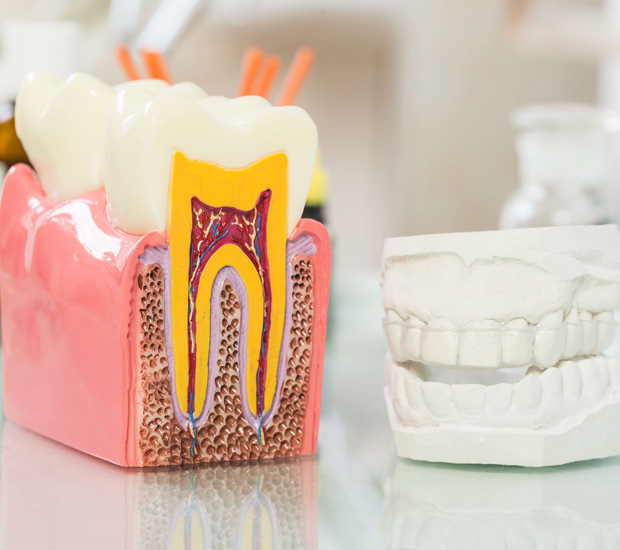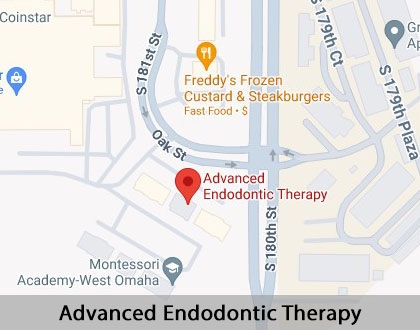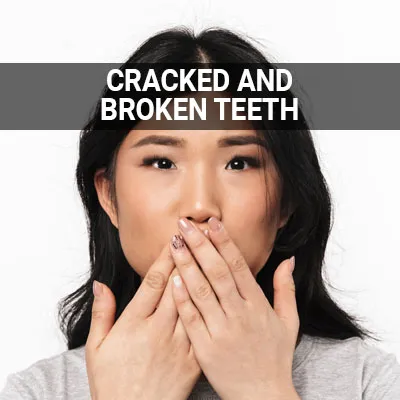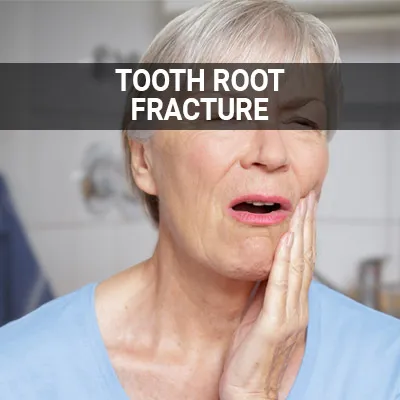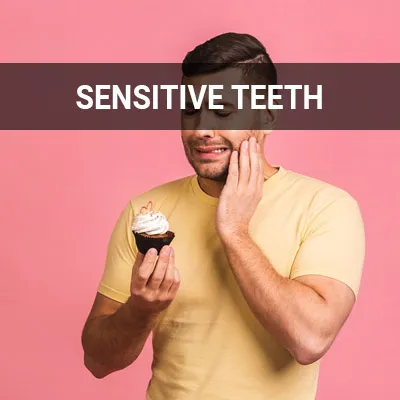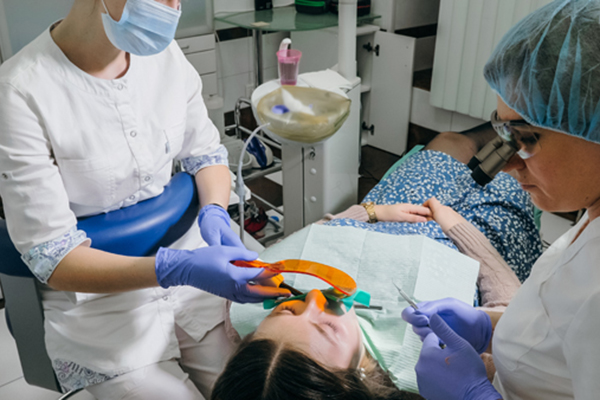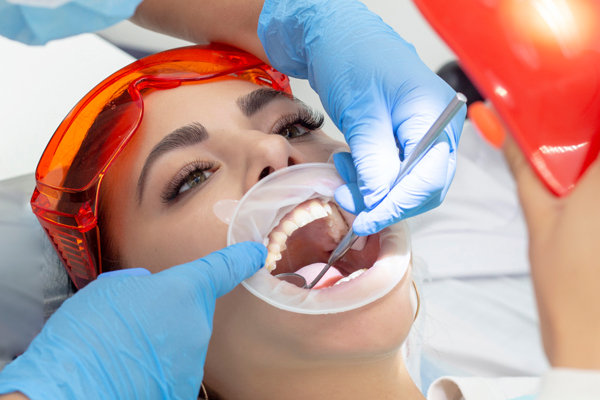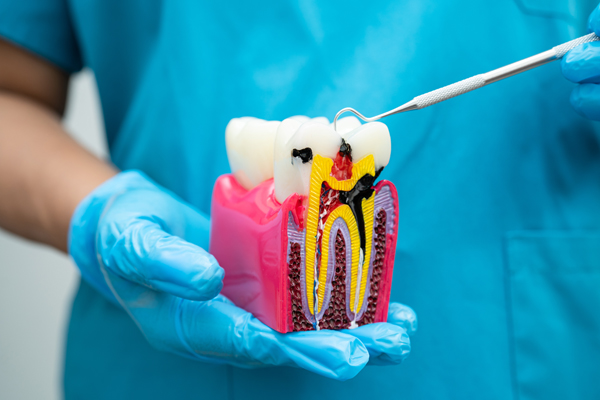Tooth Anatomy Omaha, NE
Understanding tooth anatomy can help people make an informed decision about their dental treatment. Pain in a tooth could be an indication of tooth decay. If a person has severe pain, sensitivity to hot or cold foods, or extreme pain when chewing, it could mean that the tooth decay has progressed far enough to damage the pulp inside the tooth.
Tooth decay treatment is available at Advanced Endodontic Therapy in Omaha and the surrounding area. Do not put off treatment if someone has severe tooth pain. Call us at (402) 403-6988 to learn more or to schedule an appointment.
Types of Teeth
Humans have four types of teeth, and each type plays a different role. Certain types of teeth are also more susceptible to trauma or deep tooth decay than others.
- Incisors. Incisors are located in the front of the mouth and are shaped like small chisels. They have sharp edges for biting into food. There are four incisors on the top and four on the bottom.
- Cuspids. Located next to the incisors are the cuspids or canine teeth. Canines have a sharp and pointy surface that helps tear up food. Humans have two canine teeth in the upper jaw and two in the lower jaw.
- Molars. Molars are the biggest and strongest teeth. Located in the back of the mouth, these teeth have a large surface area for grinding up food. People have six molars in the upper jaw and six molars in the lower jaw. Four of these molars, known as third molars, are wisdom teeth. Many people have these teeth removed due to limited space in the mouth. Wisdom teeth can cause crowding and become impacted, meaning they are stuck under the gums and do not have enough room to grow in.
- Premolars. The bicuspids or premolars, which are larger than canines and incisors, have a flatter surface with ridges. Premolars are used for crushing and grinding food so that it is easier to swallow. There are four premolars in the upper jaw and four in the lower jaw.
Upper teeth are more susceptible to injury than lower teeth, especially the upper central incisors. These front teeth are often injured in falls, from fighting, and bicycle accidents. Due to their position in the back of the mouth, the molars are the hardest to reach and, therefore, the most prone to tooth decay.
“Certain types of teeth are more susceptible to trauma or deep tooth decay than others.”
Tooth Structure
Teeth consist of a crown and a root. The root, which is roughly two-thirds of the tooth, extends below the gum and into the jawbone. The tooth is held in place by the periodontal ligament. The crown is the part of the tooth that is visible above the gums.
Teeth are composed of various tissues, including hard tissue and soft tissue. The outermost layer of a tooth, the enamel, is the hardest tissue in the human body. Tooth enamel helps protect teeth from bacteria and also gives the teeth strength they need for chewing.
Just below the enamel is a hard tissue known as dentin, which helps protect teeth from heat and cold. The final type of hard tissue found in teeth is cementum, a bone-like material covering the tooth root. Inside the tooth is the pulp cavity, which contains the tooth pulp, blood vessels, and nerve tissue.
“Teeth are composed of various tissues, including hard tissue and soft tissue.”
Tooth Decay
Acids in the mouth can wear down the tooth enamel, leading to tooth decay. Tooth decay begins gradually and consists of several stages. As the tooth enamel begins to lose minerals, a white spot may develop on the tooth. This is known as initial demineralization. At this stage, the demineralization can be reversed by treating the teeth with fluoride. If the tooth decay progresses, however, it will lead to enamel decay. Holes, or cavities, will develop in the tooth and must be treated
If tooth decay reaches the dentin, it can progress at a much faster rate. As a result, dentin decay can cause extreme sensitivity to hot or cold food and drink. Decay that reaches the innermost layer of the tooth will cause pulp damage. As the pulp begins to swell, it can pressure the surrounding nerves, leading to intense pain.
If left untreated, tooth decay can cause an infection in the tooth pulp. This can lead to the formation of a pocket of pus around the tooth root, known as an abscess. An endodontist must treat an abscess promptly, as the infection can spread to surrounding teeth or into the jaw bone. Once an abscess has formed, the affected tooth may need to be removed.
“Tooth decay begins gradually and consists of several stages.”
Check out what others are saying about our dental services on Yelp: Tooth Anatomy in Omaha, NE
When to See an Endodontist
Pulp damage requires treatment by an endodontist. An endodontist is a type of dentist who specializes in treating tooth pulp. Most often, treatment of pulp damage involves a root canal. During a root canal, the damaged pulp is removed, the inside of the tooth is cleaned to remove any remaining bacteria, and the pulp is replaced with a rubber-like material. A root canal allows the affected tooth to be saved, which in most cases is preferable to removing the tooth. With proper care, a tooth with a root canal can last a lifetime.
“A root canal allows the affected tooth to be saved, which in most cases is preferable to removing the tooth.”
Questions Answered on This Page
Q. What are the different types of teeth?
Q. What are the different parts of the tooth?
Q. What are the stages of tooth decay?
Q. How is damaged pulp treated?
Q. Can tooth decay be reversed?
People Also Ask
Q. How can I tell if I have a cracked or broken tooth?
Q. Can a cracked tooth be fixed?
Q. When should I seek dental care for sensitive teeth?
Q. What can cause a tooth infection? What are the symptoms of a tooth infection?
Stopping Tooth Decay
In its very early stages, tooth decay can be reversed. If an individual notices white spots on their teeth, they may use toothpaste with fluoride to prevent further demineralization. Bacteria in the mouth produce acid using sugar from food. To reduce the risk of tooth decay, people should limit the amount of sugar they eat, brush their teeth at least twice a day, and floss at least once a day. It is also important to see a dentist every six months for checkups and cleanings.
“If an individual notices white spots on their teeth, they may use toothpaste with fluoride to prevent further demineralization.”
Frequently Asked Questions
Q. Can tooth decay go back to normal?
A. Decayed enamel cannot be regrown. While demineralization can be reversed with fluoride treatment, the enamel will not grow back once a cavity has formed in the tooth. If the cavity is not treated by a dentist, it will gradually worsen and affect the tooth dentin and pulp.
Q. Why do I get cavities so easily?
A. Some people are naturally more prone to cavities than others. If someone has teeth that are crowded, it can be hard to clean the areas in between teeth. Some people may also have naturally thin tooth enamel, which can be more susceptible to demineralization.
Q. Can stress cause cavities?
A. Stress has many adverse effects on the body, and one of them may be a greater risk of tooth decay. Stress can reduce the flow of saliva and lead to a dry mouth. Saliva is needed to wash away the acids produced by bacteria. Therefore, a dry mouth can lead to tooth decay. Always drink plenty of water throughout the day, especially if someone is experiencing severe stress.
Q. Can overbrushing your teeth cause cavities?
A. Brushing the teeth too hard can erode the tooth enamel, weakening the tooth and increasing the risk of demineralization. Take care not to apply too much pressure when brushing, and use a soft-bristled toothbrush. Avoid brushing teeth immediately after eating acidic foods, as this can also damage the tooth enamel.
Q. Should you brush after each meal?
A. A person does not necessarily need to brush after each meal. Brushing teeth more than twice a day is fine, but dentists recommend that a person wait at least 60 minutes after eating. The important thing is that people brush before going to bed. Going to bed without brushing can cause plaque to build upon your teeth and increase the risk of tooth decay.
Start Feeling Better – Visit Us Today
By visiting us as soon as possible, our team can help get you the professional treatment you need. Instead of waiting around and allowing the symptoms to get worse, we can provide you with treatment options.
Definitions
See an Endodontist for Tooth Decay Treatment
When treated promptly, tooth decay can be stopped, and the teeth can be saved. If someone has tooth decay that has already progressed past the dentin, they should contact an endodontist immediately to determine if a root canal is necessary. Call us at 402-403-6988 to learn more about tooth anatomy and how to keep teeth healthy.
Helpful Related Links
- American Association of Endodontists. What’s the difference between a dentist and an endodontist? 2024
- Healthhub. How Can I Prevent Tooth Decay in My Child? 2024
- Healthline. Deciduous Teeth. 2024
- MedlinePlus. Tooth anatomy. 2024
- National Institue on Aging. Taking Care of Your Teeth and Mouth. 2024
- National Library of Medicine. Bacterial Invasion of Pulp Blood Vessels in Teeth. 2024
- News Medical Life Sciences. What is Dentin / Dentine? 2024
- WebMd. Teeth and Aging. How Teeth Change With Age. 2024
About our business and website security
- Advanced Endodontic Therapy was established in 2008.
- We accept the following payment methods: Cash, Discover, MasterCard, and Visa
- We serve patients from the following counties: Douglas County, Dodge County, Lancaster County, and Sarpy County
- We serve patients from the following cities: Omaha, Benson, Florence, Bellevue, Fort Calhoun, Papillion, Lincoln, Bennington, Plattsmouth, Fremont and Elkhorn, Missouri Valley, and Council Bluffs
- Norton Safe Web. View Details
- Trend Micro Site Safety Center. View Details
Back to top of Tooth Anatomy
